The GEN Z Series travels to New Delhi from the United Kingdom. Bhavya Batra, a 2022 B. Arch graduated from SMEF’s Group of Institutes India, is currently working as a Senior Design Associate at ‘Navya And A Quarter’ in New Delhi. Having being brought up in 8 different cities of India, Bhavya Batra reveals, “My father had a transferable job, which meant we were always travelling to new places and packing up bundles of memories from each one of them. It was always the four of us- my father, mother, elder sister and I against all odds (smiles). Our last transfer was to Lucknow. It is here, where my journey in design truly began.”

Skyline of Lucknow, Old and New
Bhavya Batra goes on to add further, “As a child, I was inclined towards art and won prizes in various art competitions. Lucknow, the city with rich historical significance and artistry fueled my hobby into passion. My father established our business in Lucknow. My mother joined our school as a teacher. Lucknow became our home city.” Bhavya Batra comes across as a very warm person and creates designs with her heart in the right place. Creativity is ingrained in her roots with her vast experience to having lived in 8 different cities of India. Travelling increases one’s knowledge about cultures, traditions, way of living and way of thinking.
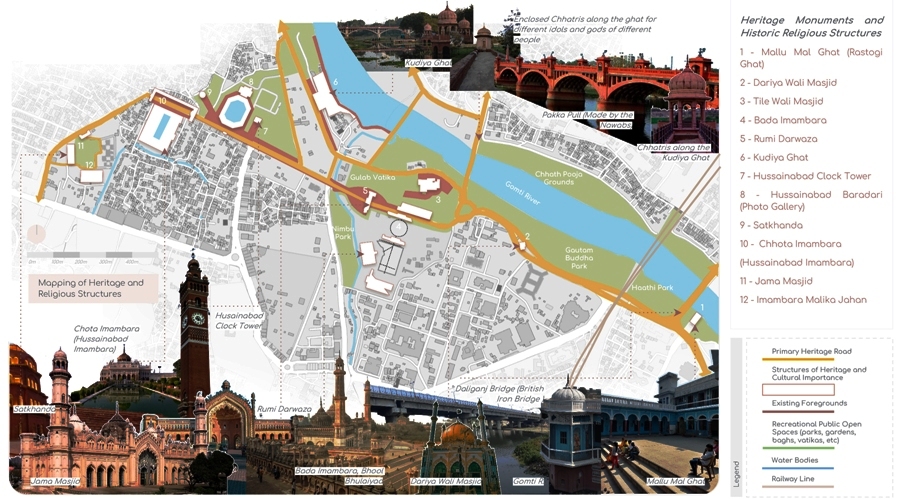
Mapping, Heritage and Tourism
Johnny D interacts with Bhavya Batra to explore her quest in the architectural world and her well-thought thesis ‘Reimagining the Cultural Nexus, Lucknow’.
What was your childhood ambition? Did you always wanted to become an architect?
As a child, I wanted to be an artist. My grandfather, a Colonel in the Army by profession and an artist by passion, greatly influenced me! During vacations, I would visit him and admire his work. His dedication to art despite his demanding career inspired me. I always wanted to grow up to be just like him. Although my path eventually led me to architecture, the artistic passion that my grandfather instilled in me remains at the core of everything I do.
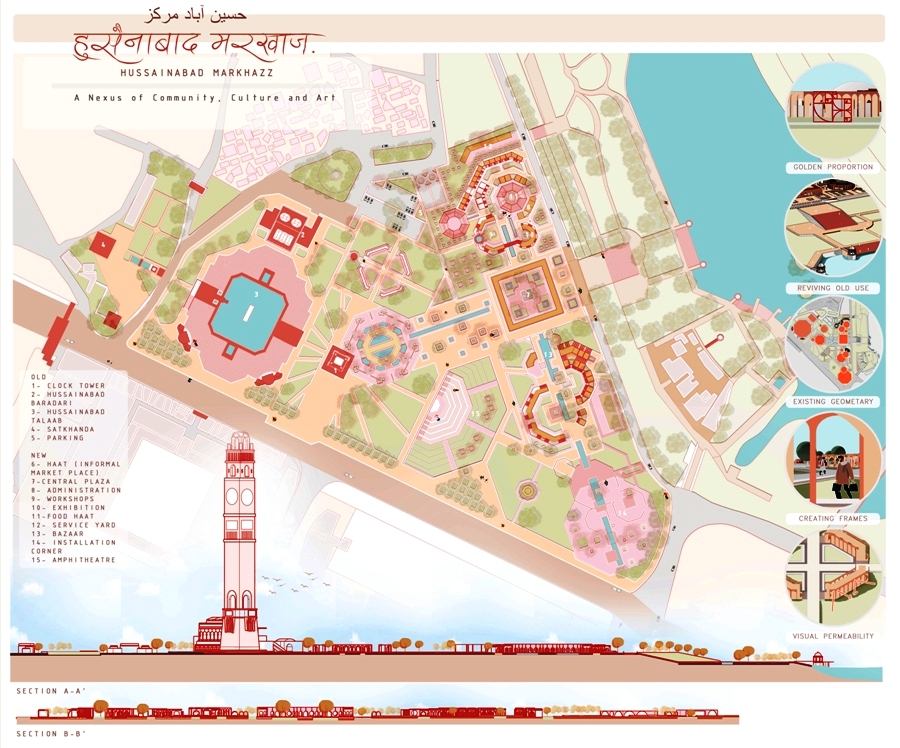
Architectural Intervention – Site Plan
How has architecture influenced your life as a student?
Architecture has instilled a constant state of awareness in me. I find myself constantly aware of my surroundings – whether it is the use of cobblestone on the pathway, the change in colour temperature of lighting from one space to another or the materials used in the structures around me. We are always surrounded by architecture in our day-to-day lives and it is simply impossible not to notice it.
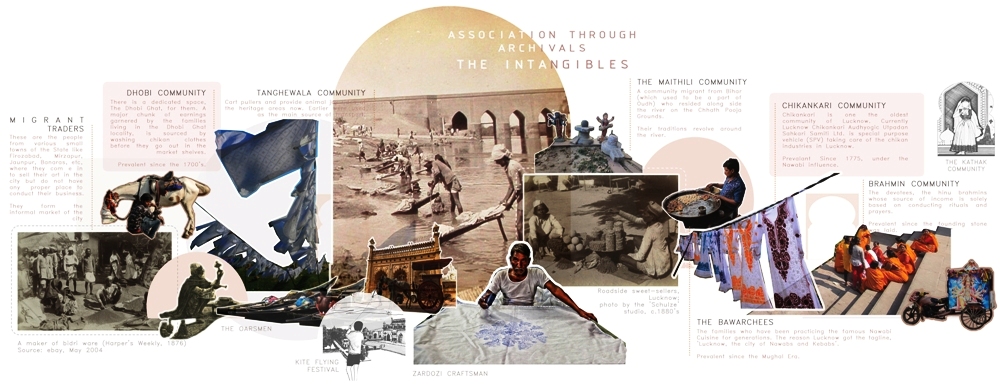
Association through Archival’s Evidences, the Intangibles
Briefly tell us about your University and the Course.
I completed my B. Arch degree from SMEF’s Brick School of Architecture, Pune. The college campus was designed by Pune-based architect Girish Doshi. His vision and attention to detail is visible in every nook and corner. It was a joy studying Architecture, while being surrounded by an architectural masterpiece. At SMEF’s Brick, no ambition was too far stretched and no design was too impractical, which has permanently broadened my perspective on design.
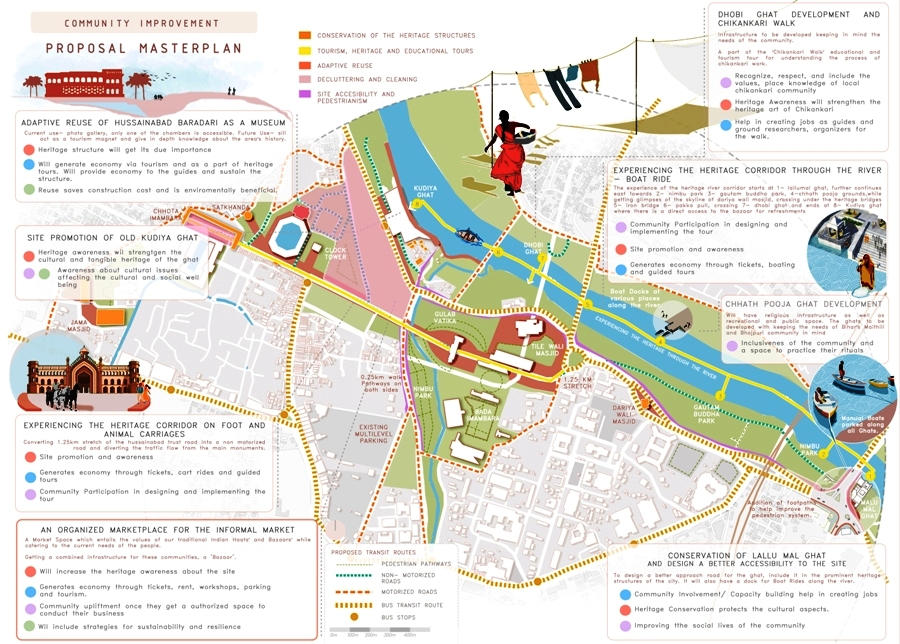
Master Plan – Community Level
Briefly describe the significance of your project with the ‘Title of the Project and Site Location’.
My project ‘Old Communities, New Ideas: Reimagining the Cultural Nexus of Lucknow’ attempts to revive the lost heritage of forgotten communities by providing them with social, cultural and economic means.
‘The idea is to create a model, which sustains itself and an economy which generates itself’.
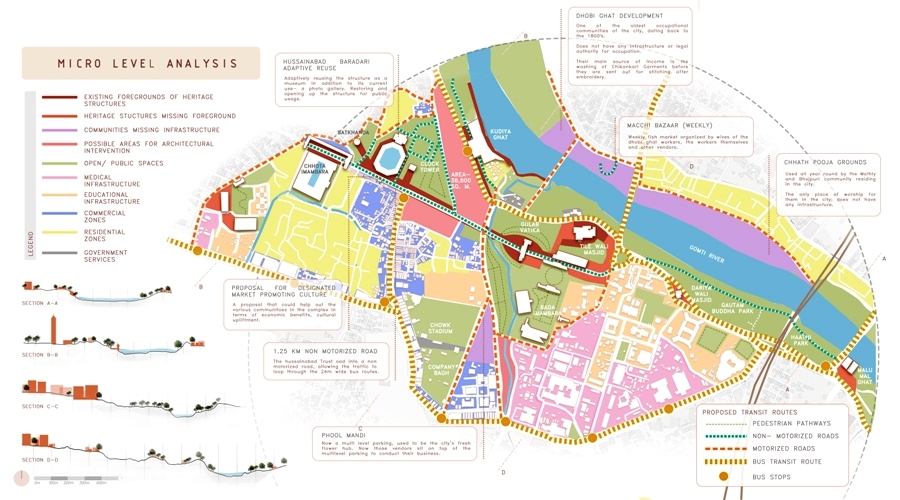
Micro Level Site Analysis
Revitalizing historic centres involves balancing respect for the past, understanding their current state, and figuring out how to honour their history, while adapting to the ever-changing urban fabric. Historic centres in many Indian cities offer a glimpse into the grand past, showcasing a way of life and community that modern developments lack. However, these areas often suffer from low quality of life due to neglect that began during British times and continued until recently, when conditions became critical.
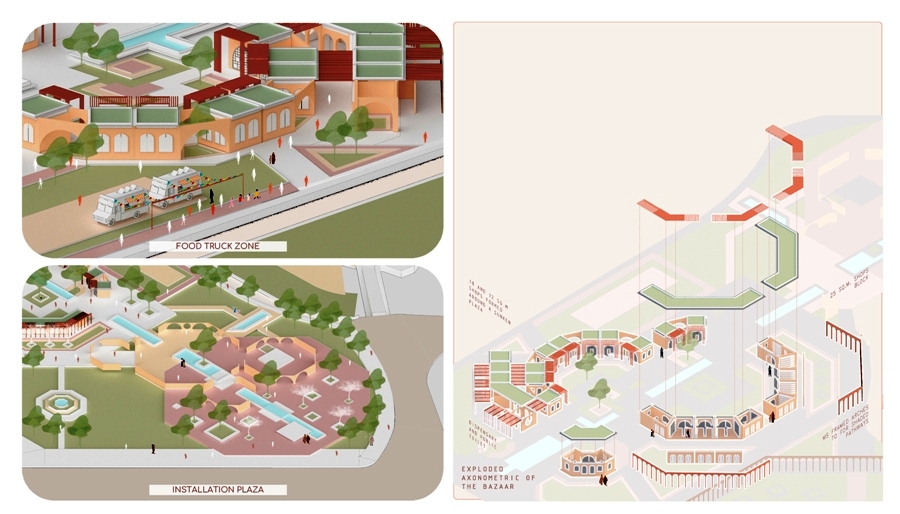
Architectural Intervention
These historic areas are crucial to the city’s identity and heritage, thereby evoking nostalgia and reflecting an important part of Indian history. Despite providing commerce, employment and housing to many, they have been expected to function like the rest of the city without regard for their unique features and historic significance. My project addresses the deterioration of these areas, while focusing on the need for comprehensive and sustainable revitalization. Focusing on Lucknow, the study examines strategies to improve the historic core, recognizing the city’s unique characteristics.

Association through Archival’s Evidences, the Tangibles
Revitalization efforts must incorporate social, environmental and economic progress to ensure these areas can meet modern living standards, while preserving their historic value. The aim is to create a path for regenerating Lucknow’s historic centre in a way that respects its heritage and supports its future.
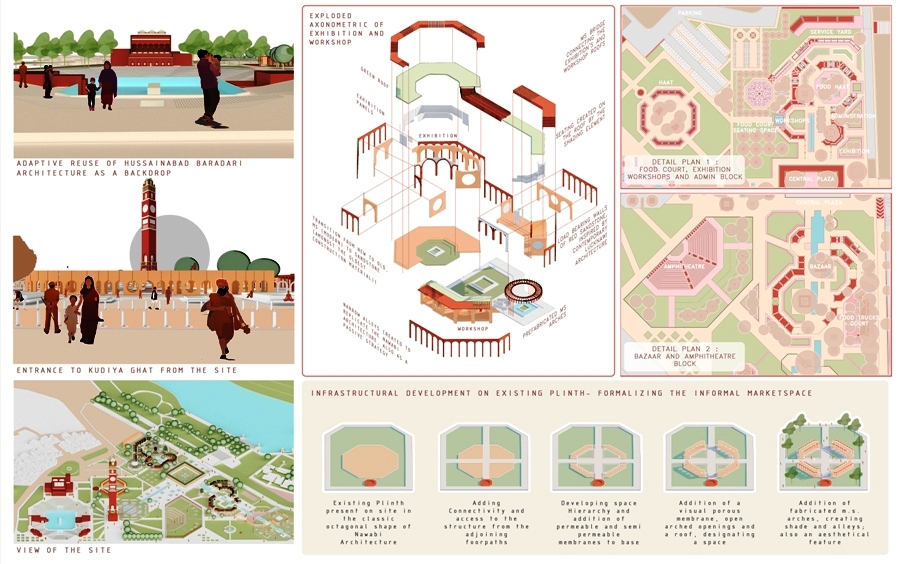
Architectural Intervention – Project Details
Which National or International architect has inspired / influenced you? Please specify as to why?
As someone who thoroughly enjoys history and understands its importance, Abha Narain Lambah is an architect I admire a lot. Her advocacy for heritage and preservation architecture is incredibly inspiring. Her dedication to preserving cultural heritage, while adapting to contemporary needs is something I aspire to emulate in my own works.
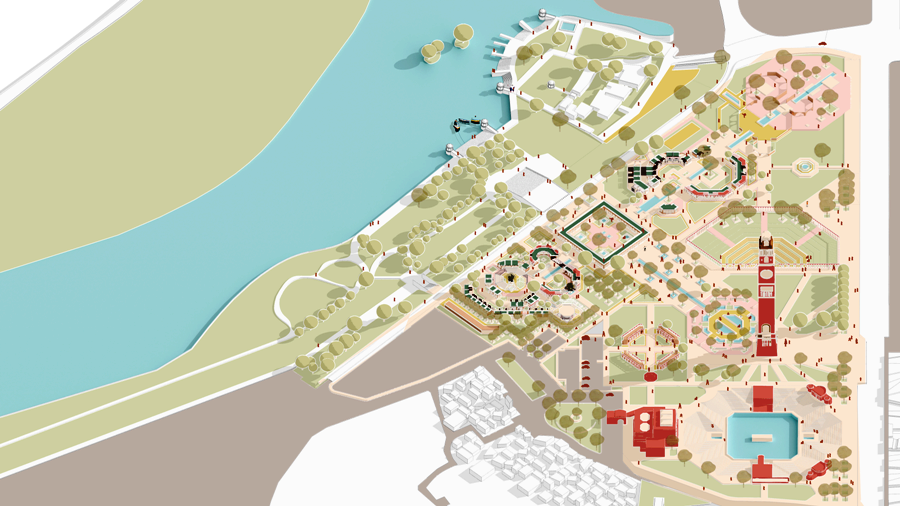
Architectural Intervention – Top View
As an Intern, what is the most important lesson(s) you have learned from senior architects, while being a part of a project?
I learned the significant difference between designing behind a screen and actual project execution. Architects are just one part of a larger team and the project’s success heavily relies on the execution team. I realised the importance of building strong relationships with collaborators and how mutual respect is crucial for a project’s success. Effective teamwork and good communication are as important as the design itself.
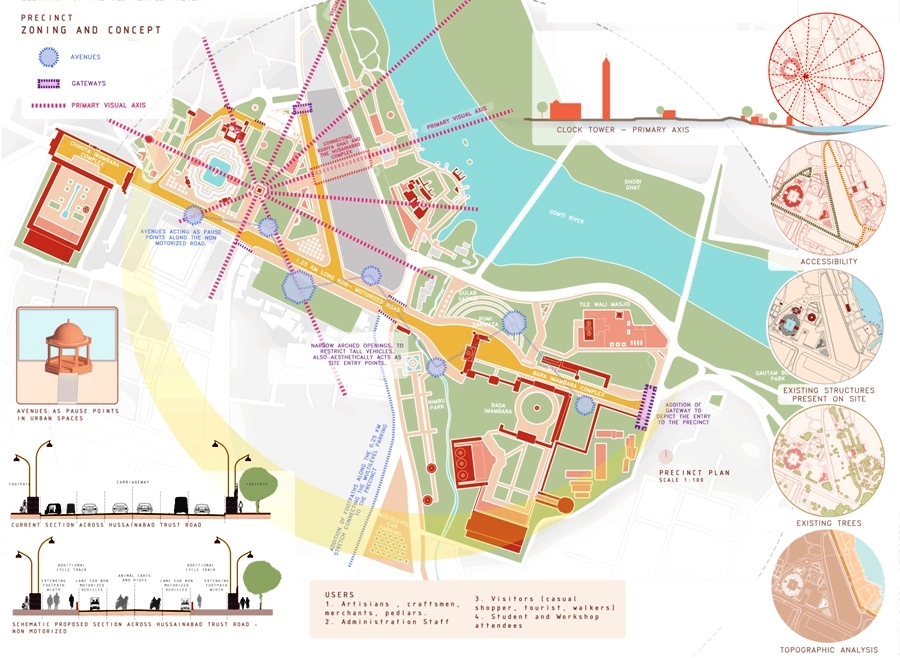
Precinct Level – Zoning and Concept
What role do you perform as a Senior Design Associate at ‘Navya And A Quarter’ in New Delhi?
My responsibilities range from taking a lead in designing to project execution. This includes designing, handling client meetings, overseeing site work, selecting materials, sourcing products and managing the entire process from initial design to the final product. Upon completion, I also plan and assist the photo shoots, build the press kit for the project, which is what eventually gets featured. Additionally, a significant part of my role involves working closely with the team, understanding their strengths and building an execution path that leverages those strengths for successful outcomes.
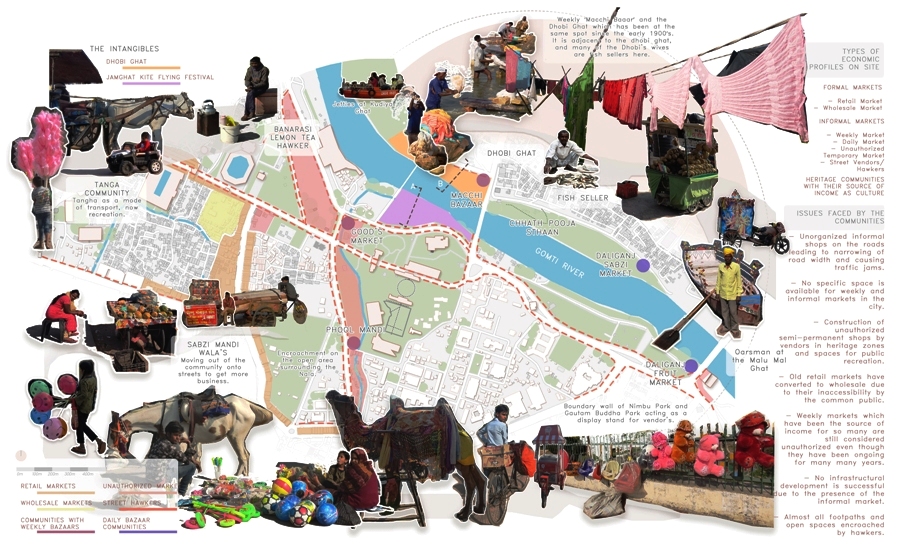
Mapping, Mercantile – Economy Generators
Hostile architecture is an eyesore and fast changing the urban landscape of prominent cities around the world. Architecture is meant to benefit the people / users at large, but the effects of hostile architecture are targeting people and depicting wickedness of the society and is against the ethos of architecture field. Elucidate your perspective about this unwanted trend in urban landscape.
Urban design should create human-centric spaces that enhance accessibility and inclusivity. Hostile architecture, which deters certain behaviours or groups, contradicts this principle. Such design choices impact city inhabitants and must strike the right balance. Addressing issues like homelessness requires comprehensive solutions, not hostile measures that merely displace problems. Hostile architecture reflects a lack of compassion and undermines the ethos of the architecture field. We should design spaces that benefit all users and embody values of inclusivity and support.
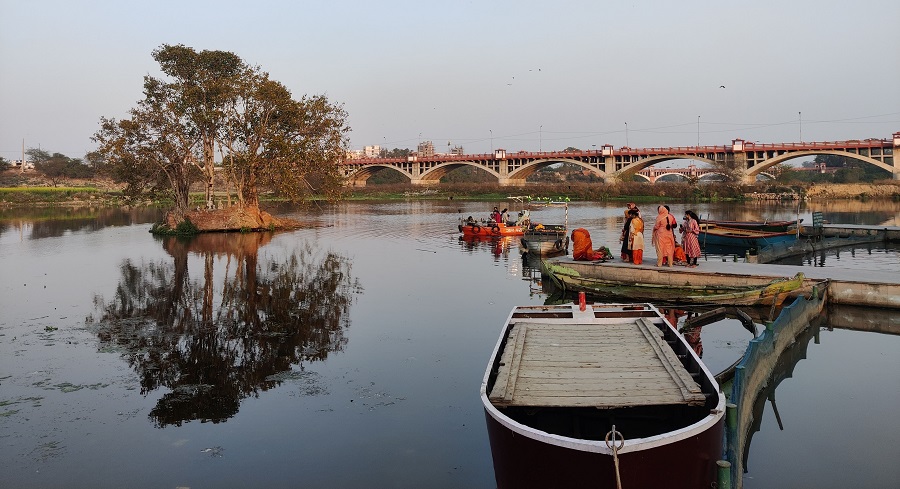
Hostile Architecture in Lucknow – River Bank without Boat Moor
Which significant aspects of the global platform ‘zerobeyond – the new frontier!’ did you liked the most, and why?
First and foremost, as someone who is just starting out in the professional world, the inclusivity of ‘zerobeyond – the new frontier!’ was great to read about peers who are also at similar stages in life. Then, the range and varying topics that have been covered on the global platform and the in-depth analysis of Climate-related topic is truly commendable!
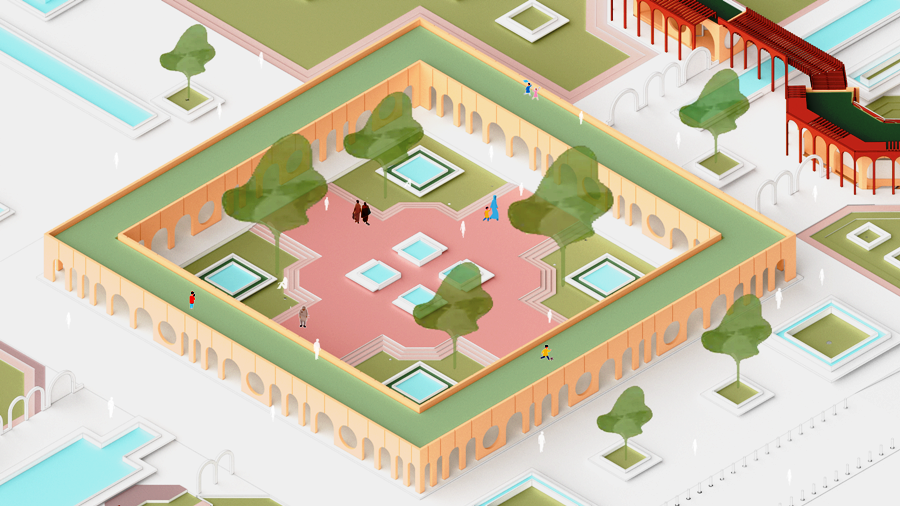
Architectural Intervention – Central Plaza
The time to save Planet Earth from climatic catastrophes / human greed crisis has already slipped away from humans’ hands. Elucidate your views how the future of your generation is going to rise above the past generations to tackle this existential crisis?
We, as a generation, have the privilege and the curse of ‘awareness’. I like to believe the first step to solving any issue is identifying it and its root cause. Fortunately, we already have our task cut out for us. I already see my peers and myself being more conscious about the growing crisis. Retrofitting, conservation and revitalization should be the norm, along with sensitization of materials and building techniques.
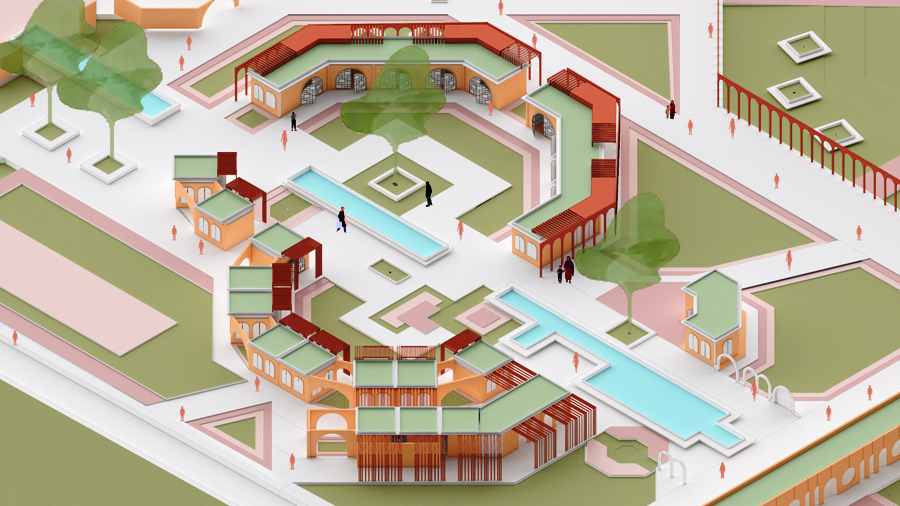
Architectural Intervention – Bazaar Details
Local charm of cities has diminished due to Modern Architecture as every city looks alike and similar. How should architects / urban planners / landscape architects modernize cities, while maintaining the local charm intact?
I think the key to this lies in ‘conscious designing’. We, as designers, should be conscious of the location we are designing in its climatic requirement, the people we are designing for and their needs. Studying and integrating vernacular architecture, which inherently respects these elements, is crucial in modernizing cities while maintaining their unique identities intact.
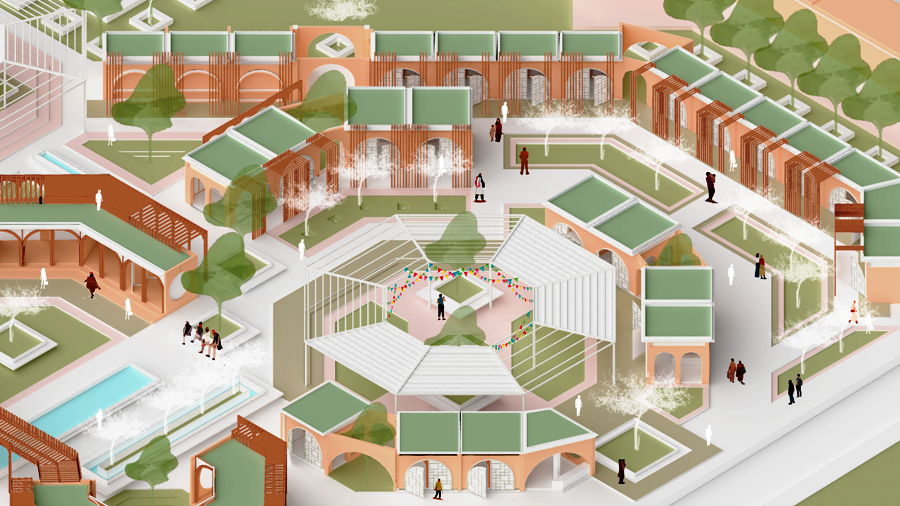
Architectural Intervention – Food Haat
Looking at the past in the current present, what are the futuristic architectural changes you would like to see in your home city / town? Elucidate the reasons for your vision.
In Lucknow, I envision retaining its old-world charm while embracing futuristic architectural changes. I hope to see new developments that preserve the city’s cultural identity and complement its existing monuments and heritage corridors. It is important that any new architecture reflects the grandeur and essence of Lucknow, thereby ensuring the city maintains its unique cultural and architectural character withholding its historical significance for future generations.
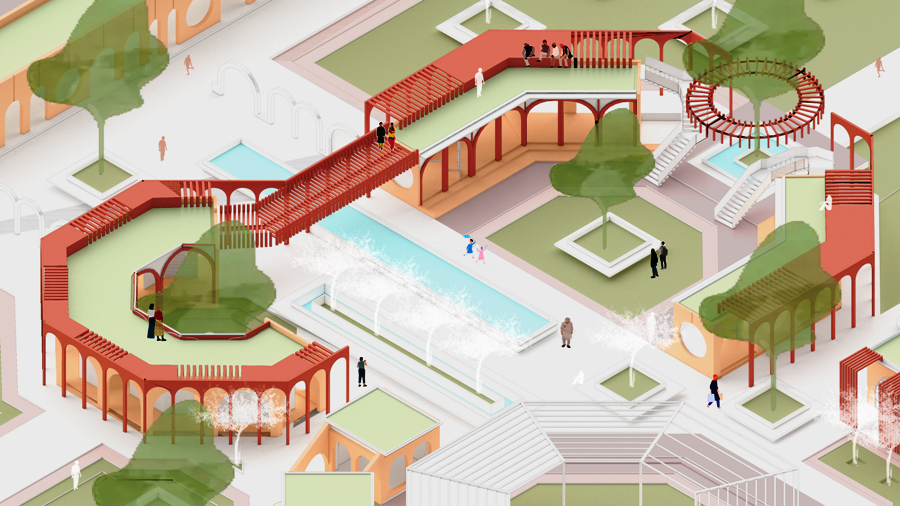
Architectural Intervention – Exhibition and Workshops
Honours and awards related to architecture, if any.
2022 Thesis of the Year – Recognized with the Award at SMEF’s Brick School of Architecture, at the graduation ceremony.
Winner: Future Office, Rethinking Office Spaces by Archue – An international competition held by Archue, a global brand regarding post-pandemic office spaces during the pandemic.
2021 Urban Design Project of the Year – Recognized with the Award at SMEF’s Brick School of Architecture, at the ‘Brick 12 on 12 Event’, where each semester’s top project is recognized and showcased.

Moment of Pride
All India Top 6: EcoNiwas Samhita
A PAN India competition regarding energy efficient housing in Architecture.
Image Courtesy: Bhavya Batra